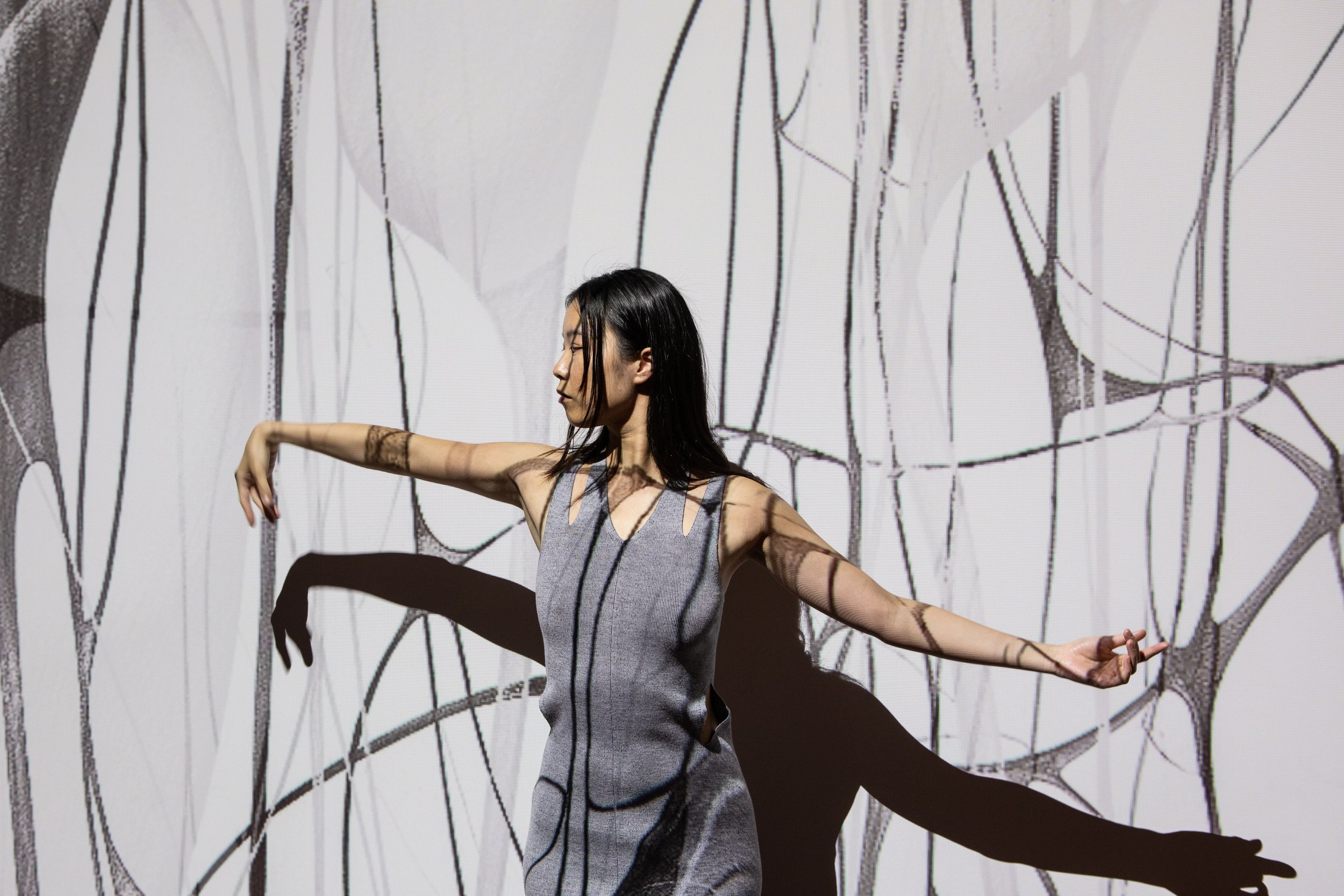Interview: Lulu Wang
Lulu Wang (she/her) is an East London-based Chinese interdisciplinary artist. Through her visual creation and performance, she sees the body as a vessel and a shifting space that shapes human identity.
Lulu Wang photographed by Vicky Polak.
By incorporating AI technology, sound and posthumanism narratives, her practice uses abstract visual language and performative character to translate the symbiotic connections between emotional worlds and their physical embodiment - exploring the power and beauty of imperfection of humanity, as well as the nature and fantasies of its existence.
Lulu Wang photographed by Vicky Polak.
Her Drawing in Movement workshop was conceived as a transformative blend of visual art, performance and meditation. It operates as a drawing session, where participants are invited to interpret a live movement performance, fostering dynamic flow between the body, the space and the mind.
Ahead of the workshop, photographer Vicky Polak made images, and our curator Ché Zara Blomfield interviewed Lulu about her practice and to gain more insight into the workshop:
Prototype #04, 2023, Lulu Wang
You have a background in graphic design, what led you to become an artist?
Working on graphic and visual design is logical, however when I was organising the patterns and shapes I also found more emotional intentions there. The ways I create speak for what I see and how I feel.
Being an artist is natural, it’s a way to feel free and myself. I started my first drawing when I was in secondary school. I was obsessed with cool comic characters and fantasy worlds framed by lines. At the same time, I was training as a professional baseball player, this gave me a very close relationship with my body. And those experiences navigated my further interests in visual art and performance. What led me to do what I’m doing now started from life experiences.
How did dance become part of your practice?
Dance is a way of translating emotional language. Since I started developing performance in my practice, I have always been curious about building a way to create physical conversations between the body and the mind. Movement is how I explored the relationship between myself, others, and space. Researching gestures, performing it and working with other performers and dancers inspired my physical work and connected me to a wider community.
Drawing in Movement differs from a traditional live drawing class, can you tell us more about it?
Drawing in Movement is a unique combination of visual art and performance. It is not just about recording what we see precisely through our eyes and its visual function but beyond that, it is about how things can be imagined and felt from our perceptions.
It’s not about drawing what you see, but what is evoked from all the senses?
I would say so, it is a visual meditation that uses our senses as a portal to connect our imagination with the dynamic of body movement. It is a spiritual dialogue that draws inspiration from the physical messages conveyed by the performer's body, applied with our emotions and perceptions to visualise and discover the intangibility of its possibilities.
You love silver, what does it symbolise for you?
Silver symbolises a mirror to the soul, reflecting ourselves also perceived by others. It assumes the role of an enigmatic element that unveils aspects of our nature hitherto unexplored in my work, embodying both delicate resilience and safeguarding the vulnerability of humanity. Its hue and fluid texture form a neutral space where harmony and diversity coalesce.
Prototype - Chimera, 2023 by Lulu Wang.
Can you tell us about that process of collaborating with AI to create the drawings which are projected during the workshop?
The drawings on the wall are from my current project, Prototype. It is a learning process of self-awareness and identity-building based on the Drawing in Movement method. It facilitates a conversation between humanity and artificial intelligence. Utilising the data from my physical drawings in motion, I generate an archival base within the program and proceed with a selective process. Images are chosen based on their structural composition, visual details, and similarities. Subsequently, I recreate a new version using design software, yielding a digital hybrid outcome in still images. The underlying idea is to explore the body's identity and physicality within digital content, delving into various forms of consciousness through these abstract patterns.
Wang’s work has been presented internationally including in London at Christie’s, The Place Theatre, Tate Modern, Southbank Centre, Reference Point, UK Mexican Arts Society, Christie’s, and Cromwell Place, the UK Pavilion Expo 2020 in Dubai and DOOR Foundation in Amsterdam.





